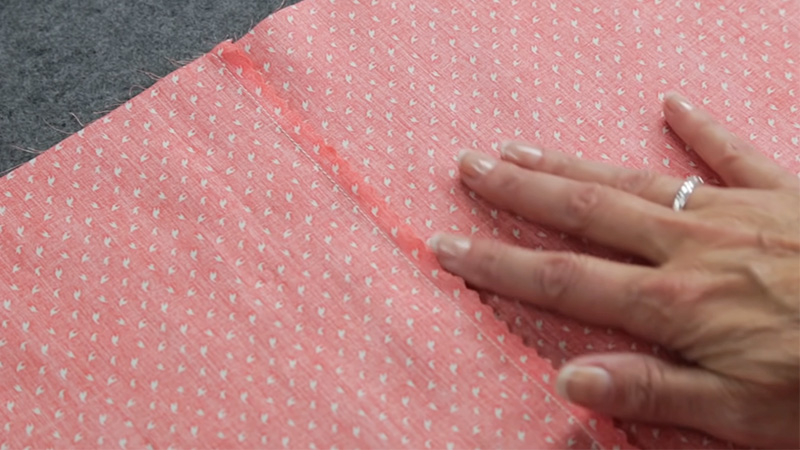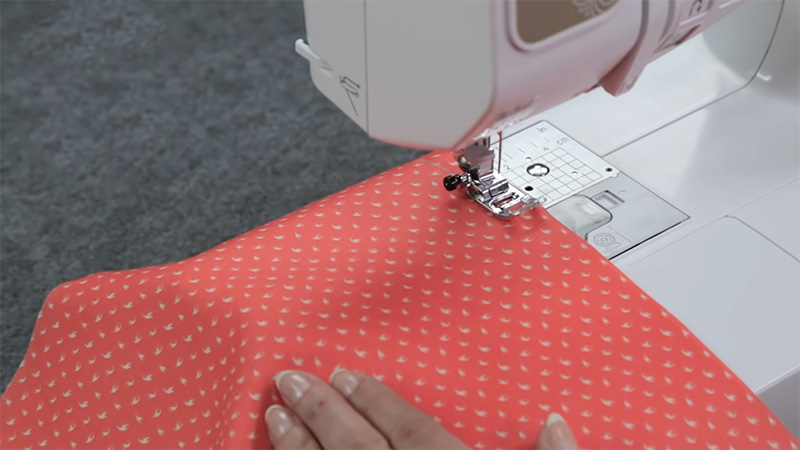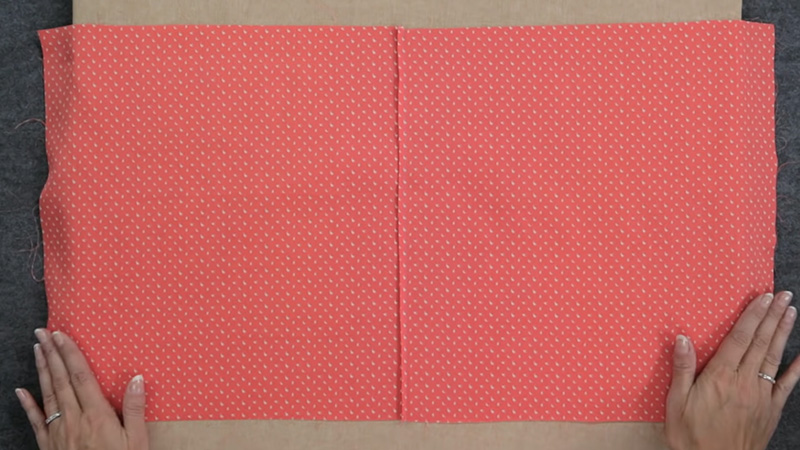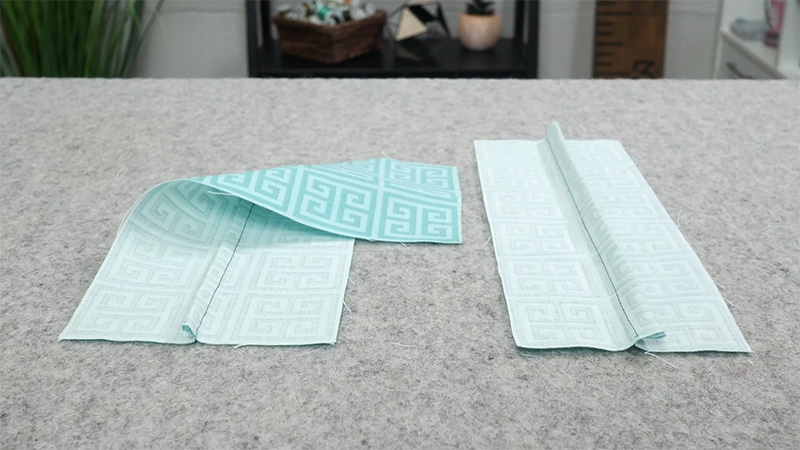Sewing enthusiasts and professionals alike often turn to the elegant and versatile technique of sewing French seams when striving for impeccable, polished results.
A French seam is a sewing method known for its ability to encase raw fabric edges, resulting in a clean and refined finish on both the inside and outside of a garment or fabric item.
This meticulous approach is particularly useful when working with delicate or sheer fabrics, as it prevents fraying and adds a touch of sophistication to any sewing project.
In this guide, we will delve into How to Sew a French Seam, breaking it down into clear and manageable stages. Whether you are a beginner or an experienced seamstress, mastering this technique is a valuable skill that can elevate the quality and aesthetics of your creations.
From selecting the appropriate seam allowance to the final press, we will walk you through the intricacies of sewing a flawless French seam.

What is a French Seam?
A French seam is a sewing technique that creates a neat and finished seam on the inside of a garment or fabric item, often used in lightweight and delicate fabrics like chiffon, silk, or organza.
This method is known for its clean and polished appearance, as it encases the raw edges of the fabric within two layers of stitching. To create a French seam, you first sew the fabric pieces together with the wrong sides facing each other, using a narrow seam allowance.
Then, you trim the seam allowance, fold the fabric so the right sides are together, and sew a second seam, enclosing the raw edges within the seam.
This results in a tidy, sturdy, and professional-looking seam that conceals fraying and adds a touch of elegance to the garment’s interior, making it a popular choice for creating durable and aesthetically pleasing seams in fine fabrics.
How to Sew a French Seam?

Here are the simple steps to sew a French seam:
Prepare Your Fabric
Begin by placing your fabric pieces with the wrong sides facing each other. This means the right sides of the fabric will be on the outside when the seam is complete. Align the edges you want to sew and pin them together securely.
Select a Narrow Seam Allowance
Use a seam allowance of about 1/4 inch (6 mm) for your first seam. This narrow allowance helps reduce bulk inside the seam and ensures a clean finish.
Stitch the First Seam
Sew along the pinned edge, securing the fabric pieces together with a straight stitch. Be sure to maintain the chosen seam allowance consistently. Backstitch at the beginning and end to secure the seam.
Trim the Seam Allowance
Carefully trim the excess fabric from the seam allowance to reduce bulk. Leave a small margin of about 1/8 inch (3 mm) to avoid cutting into the stitches.
Press Open the Seam
Open up the fabric so the right sides are facing each other. Use a hot iron to press the seam flat. This helps set the stitches and ensures a crisp final seam.
Stitch the Second Seam
Fold the fabric along the seam you just pressed, encasing the raw edges of the first seam within the fold. Pin the folded edge to hold it in place. Sew another straight seam, using a slightly wider seam allowance (typically 3/8 inch or 1 cm) than the first seam. This will secure the raw edges inside the seam.
Press the French Seam
Once the second seam is sewn, carefully press the French seam flat, this time with the right side of the fabric facing up.
Ensure that the seam is flat and smooth and any raw edges are fully enclosed within the seam. Your French seam is now complete, creating a clean, elegant finish on both the outside and inside of the fabric.
These steps guide you through the process of creating a French seam, which is particularly useful when working with delicate or sheer fabrics, as it prevents fraying and adds a professional touch to your sewing projects.
Why Is A French Seam Used?

French seams are a versatile sewing technique known for their tidy and polished appearance. They find numerous applications in various sewing projects, including:
Sheer and Delicate Fabrics
French seams are commonly used with delicate materials like chiffon, silk, and organza. They prevent fraying and ensure a clean, seamless look on these fabrics, where traditional seams may be too bulky and conspicuous.
Lingerie and Undergarments
French seams are ideal for sewing intimate apparel because they create smooth, comfortable seams that won’t irritate the skin, even when using lightweight or stretchy fabrics.
Children’s Clothing
In children’s clothing, where comfort and durability are key, French seams provide a neat finish on the inside, reducing the risk of fabric edges rubbing against sensitive skin.
Fine Dressmaking
High-end dresses and formalwear often benefit from French seams, contributing to the overall quality and luxurious feel of the garment.
Curtains and Drapery
French seams are employed in curtain and drapery projects to create clean, elegant edges that look attractive from both the interior and exterior of a room.
Quilting
Quilters use French seams when joining fabric squares or strips to ensure a neat, strong connection between quilt layers without the need for additional binding.
Home Decor
When crafting items like throw pillows, cushion covers, or table linens, French seams enhance the durability and aesthetics of the finished pieces.
Securing Fraying Fabrics
When working with fabrics that tend to fray easily, like linen or loosely woven cotton, French seams offer a practical solution to prevent unraveling and extend the lifespan of the item.
Historical and Period Costume Reproduction
In costume design and historical reenactments, French seams are used to maintain authenticity by concealing raw edges and achieving a period-appropriate finish.
In each of these contexts, French seams not only improve the durability of the item but also enhance its visual appeal, making them a valuable technique in the world of sewing and crafting.
How Are French Seams Made?

French seams are a type of seam that is used to hide the raw edges of fabric and create a neat and professional finish. There are different ways to make French seams, depending on the type of fabric, the width of the seam allowance, and the desired look.
Here are some possible ways to make French seams:
The Basic Method
This is the most common way to make a French seam. It involves sewing the fabric pieces wrong sides together, then trimming the seam allowance and sewing the fabric pieces’ right sides together, enclosing the raw edges inside the seam.
This method works well for most fabrics and projects.
The Narrow Method
This is a variation of the basic method that uses a very small seam allowance, such as 1/8 inch (3 mm). It is suitable for sewing sheer or delicate fabrics that need a fine and smooth finish.
It requires careful stitching and trimming to avoid cutting through the fabric or leaving any raw edges exposed.
The Double-Folded Method
This is another variation of the basic method that adds an extra fold to the seam allowance before sewing the second seam.
It creates a thicker and stronger seam that can withstand more stress and wear. It is ideal for sewing heavy or bulky fabrics that need more stability and durability.
The Flat-Felled Method
This is a way to make a French seam that also creates a decorative edge on the right side of the fabric.
It involves sewing the fabric pieces wrong sides together, then folding one side of the seam allowance over the other and stitching it down along the edge. It creates a flat and sturdy seam that is often used for sewing jeans, shirts, jackets, etc.
The Mock Method
This is a way to make a French seam that does not require trimming or folding the seam allowance. It involves sewing the fabric pieces right sides together with a narrow seam allowance, then pressing the seam open and stitching along both sides of the seam allowance, enclosing it in two parallel rows of stitches.
It creates a similar effect to a French seam but with less bulk and hassle. It is suitable for sewing fabrics that do not fray easily or have a lot of stretch.
The Curved Method
This is a way to make a French seam that can accommodate curves and corners in the fabric. It involves clipping or notching the seam allowance after sewing the first seam, then pressing it flat and sewing the second seam as usual.
It allows the seam to bend and conform to the shape of the fabric without puckering or gaping. It is useful for sewing armholes, necklines, collars, etc.
The Bias-Bound Method
This is a way to make a French seam that also adds a pop of color and contrast to the fabric. It involves sewing bias tape along the raw edges of the fabric pieces before sewing the wrong sides together, then folding and stitching the right sides together as usual.
It creates a neat and colorful edge that can be seen on the inside of the garment. It is great for sewing fabrics that have a lot of texture or pattern that might show through a regular French seam.
FAQs
What fabrics are best suited for French seams?
French seams work best with lightweight and delicate fabrics like silk, chiffon, organza, and even cotton lawns. These fabrics benefit from the seam’s ability to prevent fraying and provide a clean finish.
Do I need special equipment for sewing French seams?
No special equipment is needed. A sewing machine, iron, pins, and scissors are sufficient. However, a narrow presser foot can make the process easier.
FAQ 3: Can I sew French seams on curved or complex shapes? Answer: Yes, French seams can be used on curved edges or complex shapes. Simply follow the same principles of wrong sides together, trim, press, and sew. It may require more precision, but the results are worth it.
What if I make a mistake while sewing a French seam?
If you make a mistake, it’s best to carefully unpick the seam and correct it. French seams are less forgiving of errors than standard seams, but practice and patience will improve your skills.
Are French seams suitable for heavy or thick fabrics?
French seams are not typically used for heavy or thick fabrics because they can create too much bulk. Instead, consider other seam finishing techniques like flat-felled seams or serging for such materials. French seams are best reserved for lightweight and delicate fabrics.
Conclusion
In the world of sewing, mastering the art of French seams is like unlocking a secret to achieving professional-quality finishes.
This technique not only enhances the durability of your garments and fabric items but also lends an air of refinement to your creations. As you’ve learned through this comprehensive guide, sewing a French seam is a straightforward yet meticulous process that yields beautiful results.
Whether you’re creating delicate lingerie, fine dresses, or home decor items, the versatility of French seams makes them a valuable addition to your sewing repertoire.
They are especially indispensable when working with fabrics prone to fraying or those requiring an elegant, concealed seam.
As you practice and incorporate French seams into your sewing projects, you’ll come to appreciate the seamless blend of functionality and aesthetics that this technique offers.
With every neatly finished seam, you’ll take one step closer to achieving the highest standard of craftsmanship in your sewing endeavors.
Leave a Reply